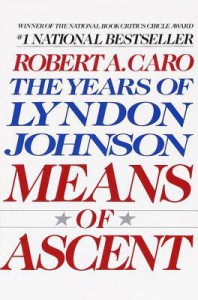tl;dr: The repeal of Wisconsin's "Equal Pay Act" is much less significant than certain politicians would like you to think it is. And the pay gap overall is much narrower than certain interest groups would like you to believe it is.
A friend of mine linked to this article, from Facebook, upset that Republican State Senator Glenn Grothman isn't concerned about the male-female pay gap. So, I read the article. And, wow. It is very sloppily written.
According to The Daily Beast, “A 2007 study by the American Association of University Women found that college-educated women earn only 80 percent as much as similarly educated men a year after graduation.”
After ten years in the workforce, the gap opened to 12 percent.
Wait. What? A 20 perccent gap opened to a 12 percent gap? How does that work? Having nothing better to do with my time, I decided to look up the referenced 2007 study. (And, people? This is 2012 and you're writing for the web. You can link to studies for your readers. Don't make them do their own Googling.)
Here's the original study: Behind the Pay Gap (2007). I started with the Executive Summary. First page, second paragraph:
One year out of college, women working full time earn only 80 percent as much as their male colleagues earn. Ten years after graduation, women fall farther behind, earning only 69 percent as much as men earn.
Oh. So, the 80 percent pay gap increases 11 points, to a 69% pay gap. Now, to be fair to David Ferguson, he's pretty much re-writing a story from the Daily Beast. And this goofily worded section is in the original story. But quoting another story is no execuse for bad writing or for failing to correct the bad writing, for your own readers.
Now, about the pay gap itself. Reading this story and the Daily Beast story, one gets the impression that their is an immense pay gap between men and women. If you read the 2007 study closely though, the pay gap isn't nearly as immense.
One year out of college, women working full time earn only 80 percent as much as their male colleagues earn. Ten years after graduation, women fall farther behind, earning only 69 percent as much as men earn.
... The only way to discover discrimination is to eliminate the other possible explanations. In this analysis the portion of the pay gap that remains unexplained after all other factors are taken into account is 5 percent one year after graduation and 12 percent 10 years after graduation.
After controlling for variables other than sexism, the pay gap after 1 year is 5% and the pay gap after 10 years is 12%. Or is it? You could read "portion .. that remains is 5%" as meaning 5% of the 20%, which is 1%. Similarly, 12% of 31% is 3.7%.
To figure out which it is, I checked the Full Report, from the study.
That is, after controlling for all the factors known to affect earnings, college-educated women earn about 5 percent less than college-educated men earn. Thus, while discrimination cannot be measured directly, it is reasonable to assume that this pay gap is the product of gender discrimination.
Okay. I think the Executive Summary isn't worded as clearly as I would like, but it is saying that 5% of the pay gap can't be explained by their regression analysis against other variables. So, the unexplained pay gap after 10 years is 12%. That's a lot better than the 20% and 31% mentioned in the Daily Beast article, but it's still not great.
But I had one more question: did the study account for the fact that men, generally speaking, negotitate more aggressively for starting pay and raises than women do?
I found this in the "What Can We Do About the Pay Gap?" section of the study? The fact that this in the potential solutions section strongly suggests, to me, that the authors didn't control for it, in their regression analysis.
Further magnifying these gender differences, women expect less and negotiate less pay for themselves than do men. Researchers have found that women expect less, see the world as having fewer negotiable opportunities, and see themselves as acting for what they care about as opposed to acting for pay. These learned behaviors and expectations (which may be based on experiences) tend to minimize women’s pay (Babcock & Laschever, 2003).
Individual differences in negotiating skills may lead to pay variation among workers with similar skill sets. Employers have a fair amount of discretion in setting wages as long as they pay at least the minimum wage and do not discriminate based on gender, race, ethnicity, age, or other protected group. One study by Babcock and Laschever (2003) found that starting salaries for male students graduating from Carnegie Mellon University with master’s degrees were about 7 percent higher (almost $4,000) than the starting salaries for similarly qualified women. Babcock and Laschever argue that this gap in part reflects differences in men’s and women’s willingness to negotiate. It may also reflect women’s perceptions about the labor market, expectations about the wages they’ll receive, and willingness to take a lower-wage job (Orazem, Werbel, & McElroy, 2003).
On a related front, several economic experiments have demonstrated that regardless of their actual work performance in a competitive setting and their beliefs about their performance, more women than men choose noncompetitive payment schemes over tournament (where a winner gets a prize and a loser gets nothing) or competition rates of payment for a task (Niederle & Vesterlund, 2005).
Indeed, when I checked "Figure 21. Key Variables Used in Regression Analysis, by Category", negotiating ability or style isn't listed as a variable. Given that, I'm perfectly willing to conceed that a 5% pay gap exists but I'm chalking it up to negotiating strategy rather than to overt discrimination. It's also not surprising that after 10 years of negotiating less aggressively, a 5% gap could grow to a 12% gap. I don't think you need to bring in the specter of active discrimination to explain that gap.
Secondly, Senator Grothman seems to say that the existing law was unfair because it would penalize employers who paid men and women differently on the basis of experience.
"Take a hypothetical husband and wife who are both lawyers,” he says. “But the husband is working 50 or 60 hours a week, going all out, making 200 grand a year. The woman takes time off, raises kids, is not go go go. Now they’re 50 years old. The husband is making 200 grand a year, the woman is making 40 grand a year. It wasn’t discrimination. There was a different sense of urgency in each person."
The way I read the law, that actually isn't the case.
Your employer may offer up a number of reasons for the differences in pay. It may point to a seniority system, a merit system, a system based on quality or quantity of work, or any other factor that accounts for the difference other than sex. Your employer could also try to argue that the jobs simply aren't substantially similar. Ultimately, however, if your employer responds to the allegations with a valid nondiscriminatory reason for the difference in pay, you must show that the reasons given are pretextual, and that the true reason for the unequal compensation is based on your sex.
Unequal pay for unequal experience does seem to be a valid exception, under state law.
Third, if you'll pardon my wordiness, I'll proceed to the actual effect of the bill that Governor Walker signed last week. I had to go to an Illinois lawyer to find a good description. That this description isn't in either The Raw Story's article or the Daily Beast's article just confirms my impression that both are sloppily written.
Here's how the bills have been described.
According to Mr. May, the Assembly has recently passed two bills: the first "repeals an employee's right to recover compensatory and punitive damages when they have proven in court that they were victims of workplace discrimination or harassment;" the second, according to Mr. May is a bill that repeals Wisconsin's Equal Pay Act, "which guarantees women the same pay as men for doing the same work."
Is that what happened?
What Mr. May does not mention is that compensatory and punitive damages were not available under the Wisconsin Fair Employment Act until 2009! So the Wisconsin Republicans' bill would simply undo what the lawmakers perceive as a recent mistake—not some venerable feature of Wisconsin law.
Well, okay, but won't victims of employment discrimination be left without a remedy? No, almost never. The Wisconsin Fair Employment Act is largely duplicative of the federal anti-discrimination laws, all of which allow the full panoply of damages. Indeed, one of the business lobby's chief complaints is that the WFEA creates an unnecessary layer of administrative hearings, which of course cost money (and therefore increase the costs and risks of hiring employees, at the margins).
This is all a big misunderstanding. There is no such thing as the Equal Pay Act in Wisconsin. Instead, the 2009 Act that created the right to get compensatory and punitive damages under the WFEA—the Act discussed above that Republicans are now trying to appeal—was entitled the "Equal Pay Enforcement Act." This is confusing because there is a federal law called the "Equal Pay Act," which requires "equal pay for equal time." But Wisconsin's Equal Pay Enforcement Act actually has nothing to to with "equal pay for equal time"—it just provides for compensatory and punitive damages for the substantive laws passed previously. Since there is no separate Wisconsin Equal Pay Act, there is no separate bill to repeal it.
Wisconsin Law has a two-step process, when alleging an equal-pay violation.
Currently, an employee may file a complaint of workplace discrimination with Wisconsin's Department of Workforce Development (DWD). The DWD has the power to investigate the claim, hold hearings and award an employee back pay, reinstatement, costs and attorneys' fees upon a finding that the employer engaged in discrimination. Repealing the WFEA in the manner proposed will not take away any of these administrative proceedings or remedies. Instead, under current law, after an employee has already proved discrimination once at a hearing in the DWD, she has to then go to state court and again prove discrimination in order to recover compensatory and punitive damages. It is the right to go to state court to recover these damages that is in danger of being repealed.
Now that the "right to go to state court" has been repealed, employees will have to follow the federal process, to receive compensatory and punitive damages.
First, federal law mandates that, just like in Wisconsin, employees go through an administrative process at the Equal Employment Opportunity Commission (EEOC) before bringing suit. After that administrative procedure, the employee then must bring a lawsuit in federal court to recover any compensation. Thus, the federal system also requires both an administrative and judicial step to resolve these claims.






